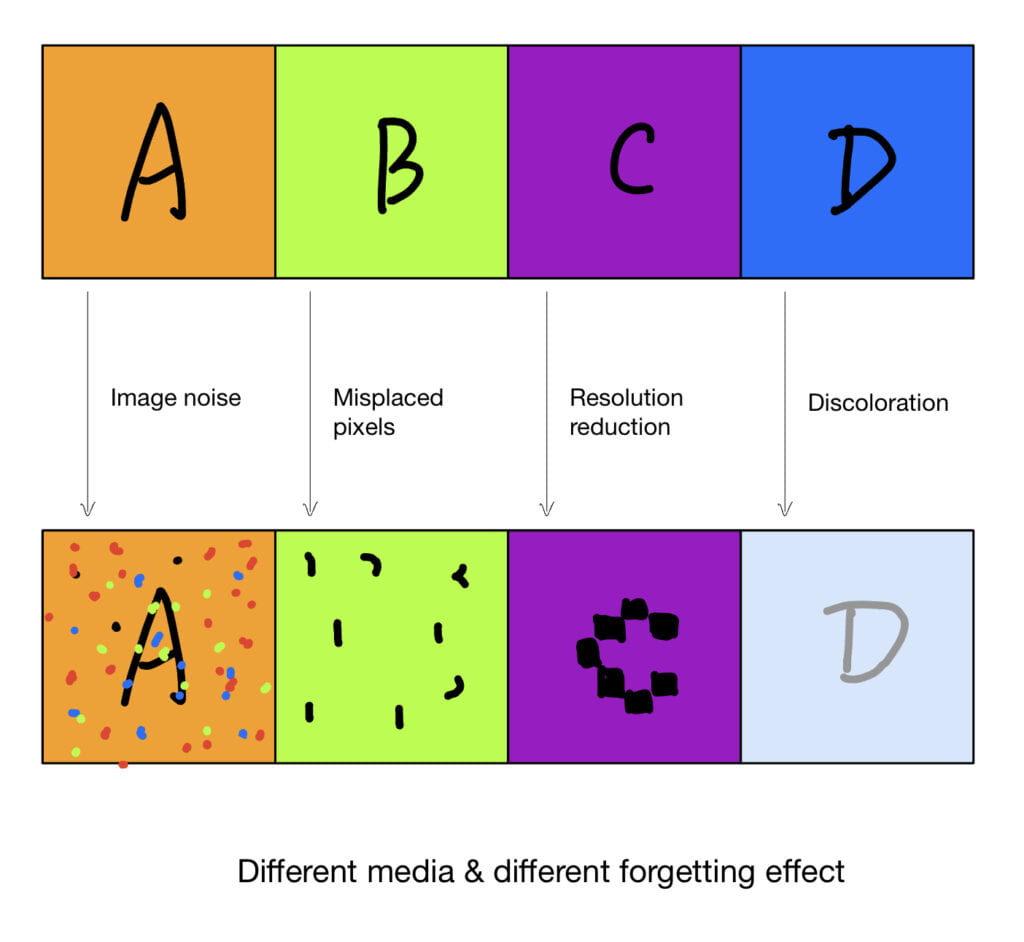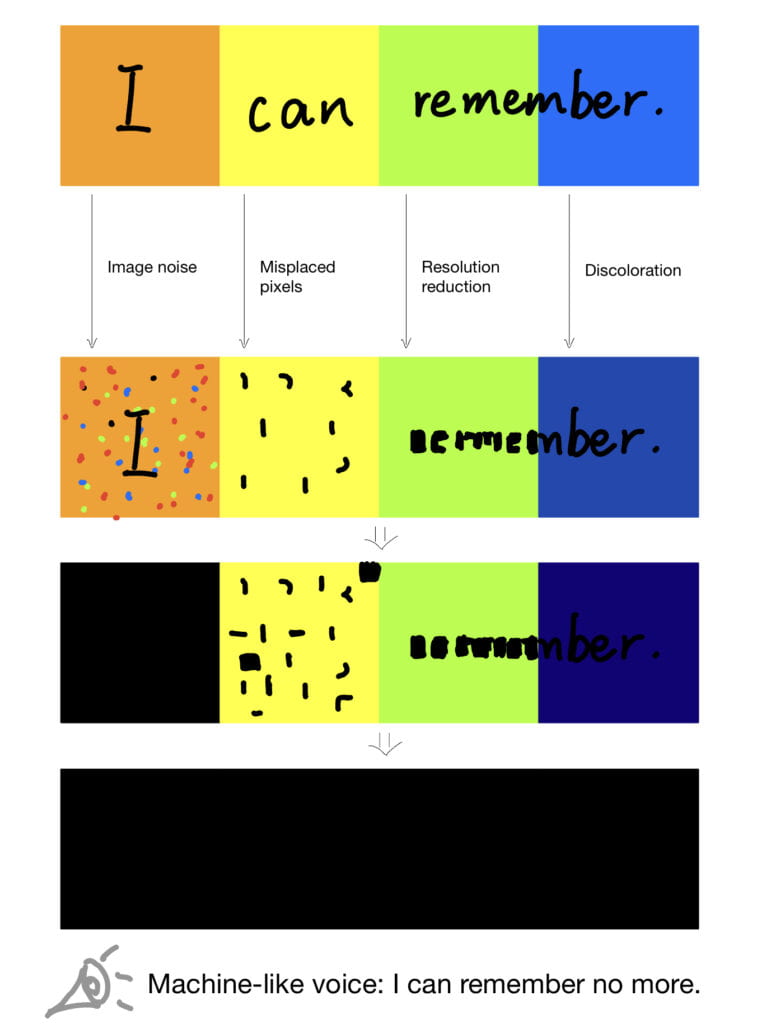After posting my thoughts yesterday, I sketched my ideas below:

My sketch of the different media and visual effects of “forgetting”. It is just an example; there are many other possible visual effects to choose from.
- Section A: image noise effect
- Section B: misplaced pixels
- Section C: resolution reduction
- Section D: discoloration
During the sketching, I realized that by representing each media with a simple letter, the visual effect of each section becomes much more obvious. This made me think: how about just using simple letters for the projection? This can make the audience spend less time deciphering the images/videos, which are less important than the visual effects.
Then, I came up with a better idea. It works as below:
- The projection is initialized with a short sentence about memory. For example, “I can remember”. It will attract the audience’s attention and prompt them to think about: who is “I”? What can “I” remember? To allow more visual effects, this sentence will be in black on a rainbow-colored background.
- For each section of the projection, once it detects the leaving of a human for the first time, its timer starts to count down from, say, 100 seconds. The timer controls the level of “forgetting” in this section. For example, for section A in the sketch above, the image noise becomes denser over time.
- Before a timer counts down to 0, if its corresponding section detects a human in front of it again, the timer will be reset to 100 seconds, and its projection will be restored. The “forgetting” effect of each section changes upon each restoration.
- When a timer counts to 0, its corresponding section becomes pure black. When all four sections fade to black, the audience hears a robotic voice saying: “I can remember no more.” This voice indicates the end of a cycle. After some time, the installation will be reset to its initial state described in point 1.
Below is a sketch of my updated idea:

